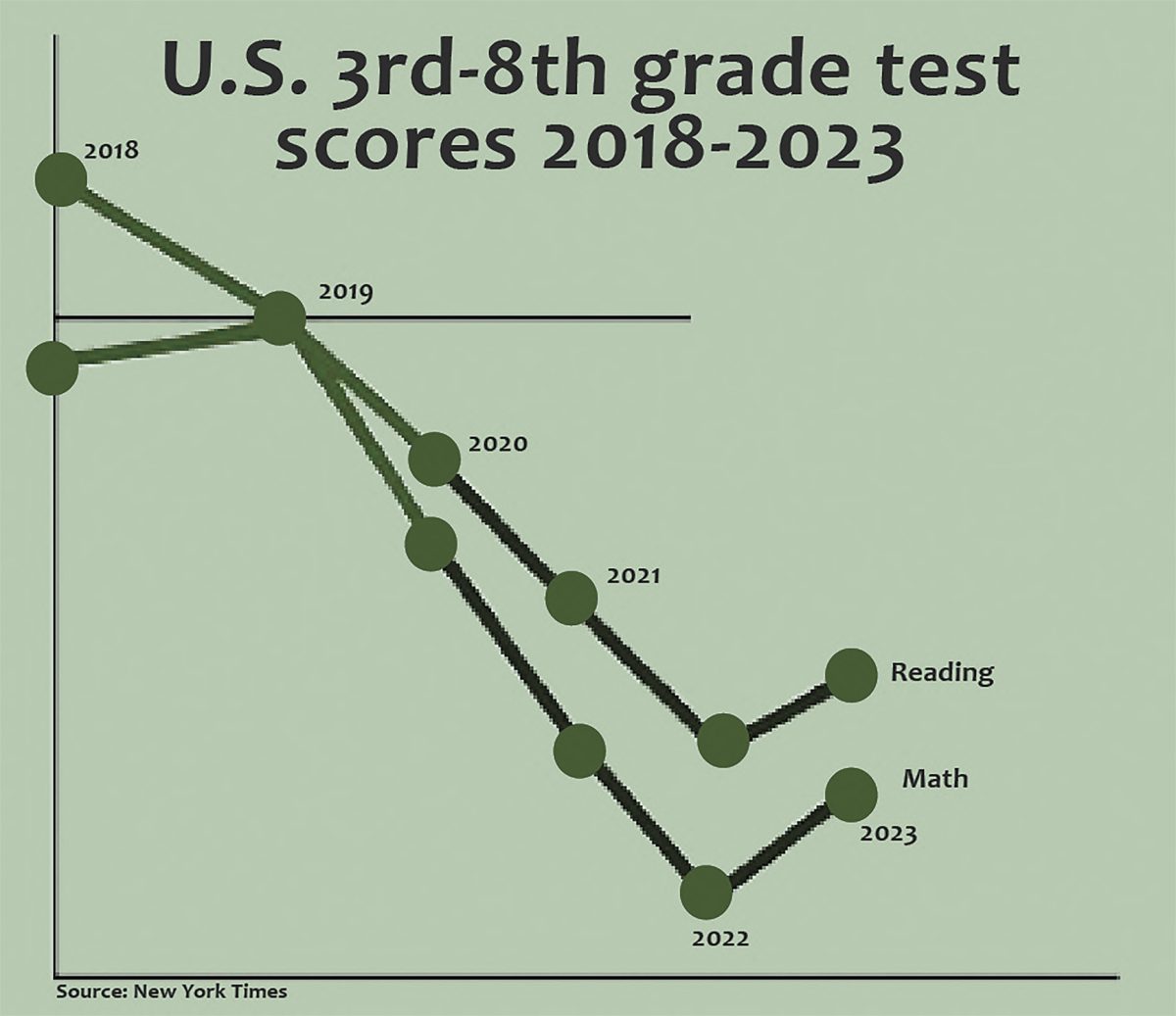
Funding for the arts and theatre departments has been a subject of debate due to the lack of support they often receive from both the federal and state governments and local school districts. The district’s previous decision to reduce the theatre department’s budget and temporarily pause activities as a result of state funding cuts from COVID-19 led to a mass outcry from the community and rekindled the argument regarding school financing. While the district did reinstate the theatre department and return their full support, arts and theatre departments are still under-supported on a nationwide scale.
According to KM Perform School for Arts and Performance, 80% of schools have experienced budget cuts since 2008 and, as a result, must determine the most necessary expenditures for students’ education. Between the 1999-2000 school year and the 2009-2010 school year, there was a 17% decrease in schools offering dance, a 16% decrease in schools offering theatre, and a 4% decrease in visual arts classes.
Furthermore, according to the National Assessments of the Arts Report Card, a federal survey given randomly to eighth grade students across the country, only 66% of students reported that their district or state have a curriculum in visual arts that their school is expected to follow. Students also reported that only 55% of schools have classrooms dedicated to visual arts with proper equipment.
The theatre and arts departments should receive the same funding and aid as core subjects, such as math and reading, from the state and federal governments because they have a positive effect on students’ social skills, mental and emotional health and academic success.
Additionally, research has shown that the arts can play a large role in the emotional development and personal growth of children. Research compiled by the National Assembly of State Arts Agencies found that students who had high arts involvement performed better on standardized tests than students that had low arts involvement, with a positive correlation between years of involvement in an arts course and SAT scores in reading and math. Furthermore, students who participate in the arts learn skills that may help them in subjects, such as reading, math and social studies, the NASAA said.
Limiting students’ involvement in activities related to the arts and extracurriculars that may help them perform better academically and teach them skills that can be used in other courses goes against the best interest of the school and the students.
The district’s focus on improving students’ mental and emotional health could also be aided through student participation in the arts. Studies presented by the UChicago Consortium said that arts programs play a role in emotional development due to their nature as goal driven activity that can help children and youths develop the skills needed to maintain a healthy mental state, such as time and stress management. The arts also provide an outlet for self-expression and identity that let children establish their personalities and combat anxiety, according to the UChicago Consortium.
In addition, the arts have been proven to help kids develop skills necessary for life outside of school. The NASAA explained that adolescents who participated in dance classes twice weekly for 10 weeks reported higher levels of confidence, tolerance and persistence. The arts also allows students to advance their self-discipline and self-management skills through self motivated practicing and the pressure to meet deadlines.
Through their participation in the arts, students have the opportunity to develop skills that they will use not only in school but in their adult lives as well.
While the current pandemic will have an effect on how the art and theatre department must continue its activities, the arts should still receive the same amount of support from the district as other co-curriculars, such as sports.
The state and federal government needs to dedicate the same support and funding to the arts departments, since they can improve students’ mental health and help them establish skills for other areas of their life. The arts can play a crucial role in students development and wellbeing and should be a focus of interest in the schools efforts to better the daily lives of students.














